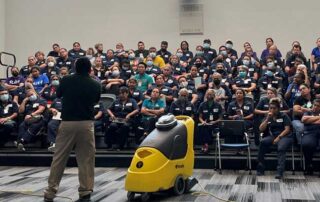Cleaning Carpets During Summer Project Time
Cleaning Schools for Health this Summer June 29, 2022 Season 3 Podcast 2 Discussing the importance of cleaning your carpets for health, especially during summer project time. Listen in to this Podcast featuring our friend Jeff Newman of Tarkett. We discuss the importance of cleaning your carpets for health, [...]





